In the early 2000’s legendary animator Genndy Tartakovsky was working on a Luke Cage comic for Marvel, but nothing ever came of it until 2016’s CAGE! which took the titular character back to his ’70s roots as only Tartakovsky could.
Marvel Comics’ CAGE! originally came out in four separate issues throughout 2016 with the story, art, and some color by Tartakovsky. CAGE! also employed long time inker, Stephen DeStefano. Helping Tartakovsky on colors was Scott Wills and Bill Wray, with VC’s Clayton Cowles on letters.
BREAKING OUT OF MY CAGE!
Luke Cage isn’t a character I go out of my way for. He is a cool character to read when written well, but it seems that it doesn’t happen often. I had heard Marvel Digital Original Luke Cage #1 was good, yet never looked into it. The few Epic Collections Marvel has released of his original series aren’t bad for when they came out but hasn’t aged too well. Nonetheless, when Luke Cage and Danny Rand (Power Man and Iron Fist) team up, its a damn blast. Yet when these two characters are separated, they don’t interest me.
Enter Tartakovsky’s CAGE!
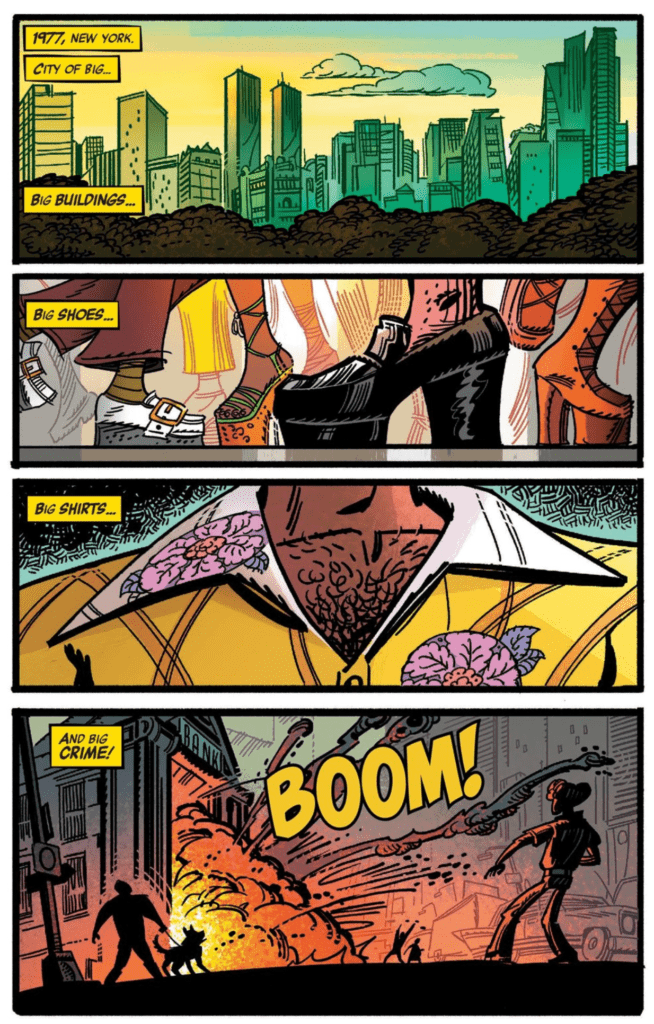
When it was initially published it got favorable reviews. But, following its debut, it is barely spoken of. This is surprising as this mini-series was Tartakovsky’s second comic he ever did. Plus, his name is extremely well known for Dexter’s Lab, and Samurai Jack, among other works. Even more so, this year marked the return of Samurai Jack and its final season. With such a big name doing such a significant character, it seems four years it has since been forgotten.
BIG CHARACTER, BIG 70’S STORY
Tartakovsky’s CAGE! is a return to Luke Cage’s original ’70s era with its share of amazing and less amazing features. Tartakovsky’s dialogue and narration ooze the ’70s vibe perfectly, which makes sense has he grew up on these comics. The dialogue and story beats would be something you’d see back in the day. On the story side, CAGE! begins with Luke Cage looking for Misty Knight after being stood up. Sadly, he isn’t able to find her or other heroes. That is until he is kidnapped like the rest of the heroes to fight a rhyming villain’s creations.
This plot of kidnapping a bunch of powered beings, putting them on an island, and having them fight themselves, or monsters isn’t new. Hell, it was used quite often back in the day. But what sets Tartakovsky’s story apart is Luke Cage himself. The series features weird, yet fun humor, high stakes, and breakneck pacing. It helps that Luke Cage is fun as hell to read in this series and a cool cat to boot. Hell, he even has time to play ball with local kids! To dramatic effect, though.
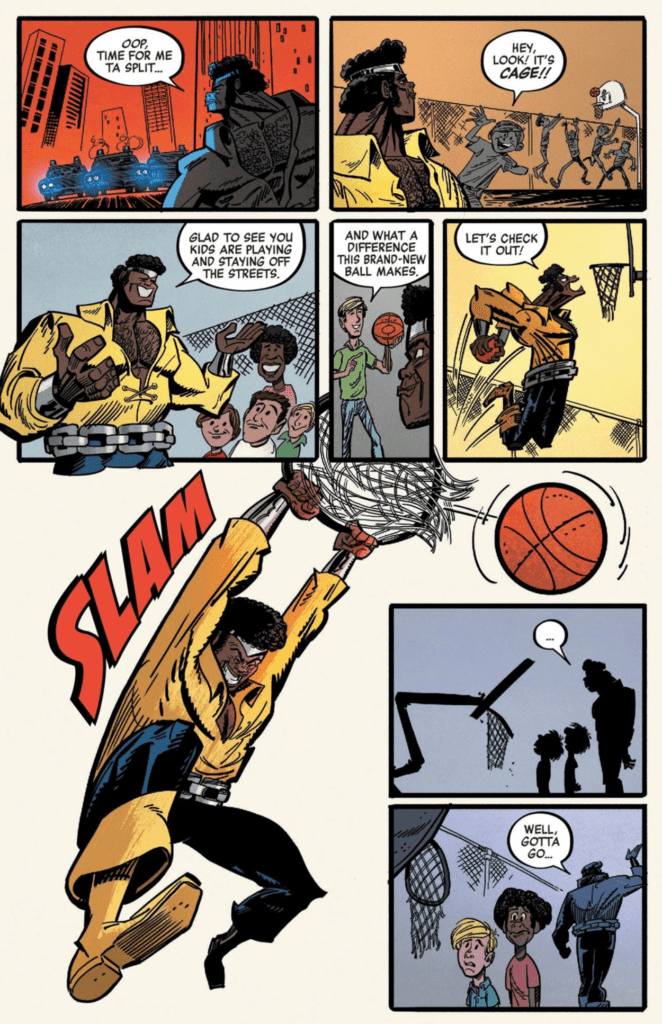
Nonetheless, one thing that stands out most is the humor. A lot of CAGE!’s humor comes in the form of Looney Tune’s visuals, which Tartakovsky absolutely nails. At times his visual humor is reminiscent of Kyle Baker’s Plastic Man. If the series was based on anything other than the ’70s, this aesthetic wouldn’t work. Yet, since it is it makes it a strong suit and is a joy to read.
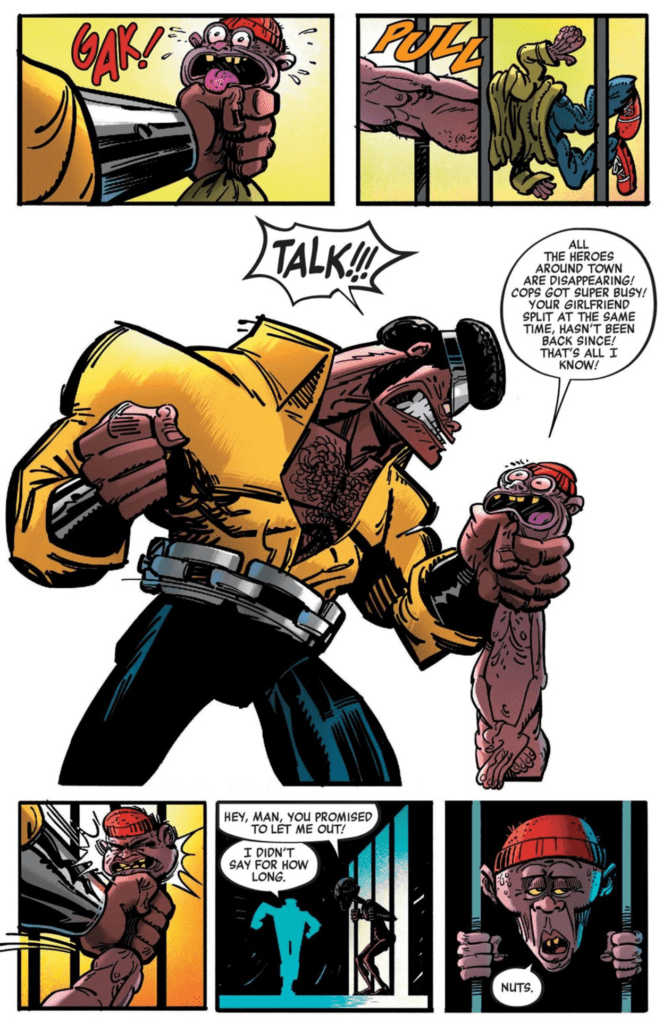
CAGE! AND BLAXPLOITATION
Luke Cage was the first black superhero to receive his own titled series and debuted June of 1972 during the blaxploitation era. As famous as this genre of media became, it also had a lot of backlashes. A fair amount of blaxploitation films had questionable characteristics for characters that leaned on the racist side. This happened often by being very stereotypical towards races and taking this to far. Much like Tom and Jerry that had some racist undertones, it was sadly a product of its times.
Yet, the original Luke Cage series never went too far, especially since it was the first of its type. But, Tartakovsky’s CAGE! can be seen with a few of the stereotypes. Such as an absurdly muscle-bound angry black character, and the way some of the black villains are drawn, mainly the character he meets in jail (seen above). As the series released in 2016, these problems were looked at less favorably, which is understandable.
OVER THE TOP ART
As much as people were hyped for Tartakovsky’s story, another aspect was even more desired—his art. Damn, does Tartakovsky’s artwork amazingly for fun comics. If you’ve watched Samurai Jack, you’ll know he understands action scenes. He brings this knowledge to CAGE! and it is gorgeous. Tartakovsky plays with negative space and panels fantastically. During the first issue, he showcases this skill to great effect when Luke Cage fights some bank robbers.
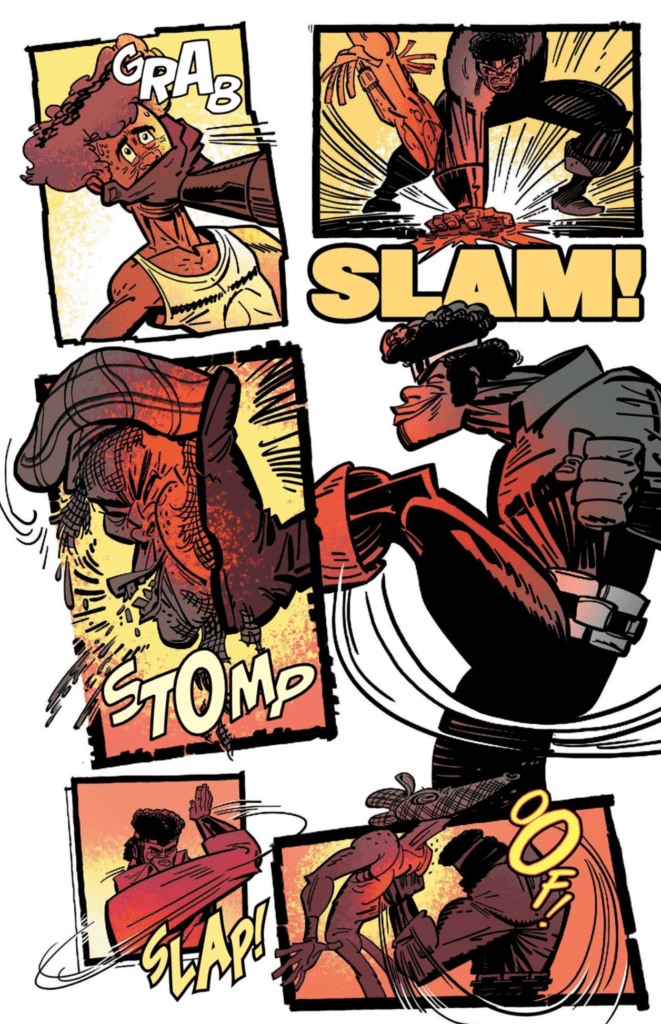
The flow of the action elegantly guides the reader while he breaks the panels making the actions seem larger than the page itself. Each fight that takes place involves heavy movements that make you feel each hit in your gut. CAGE! shows that Tartakovsky knows how to do action even in comic form. But this isn’t due to just him, as DeStefano’s inks help the characters and action pop.
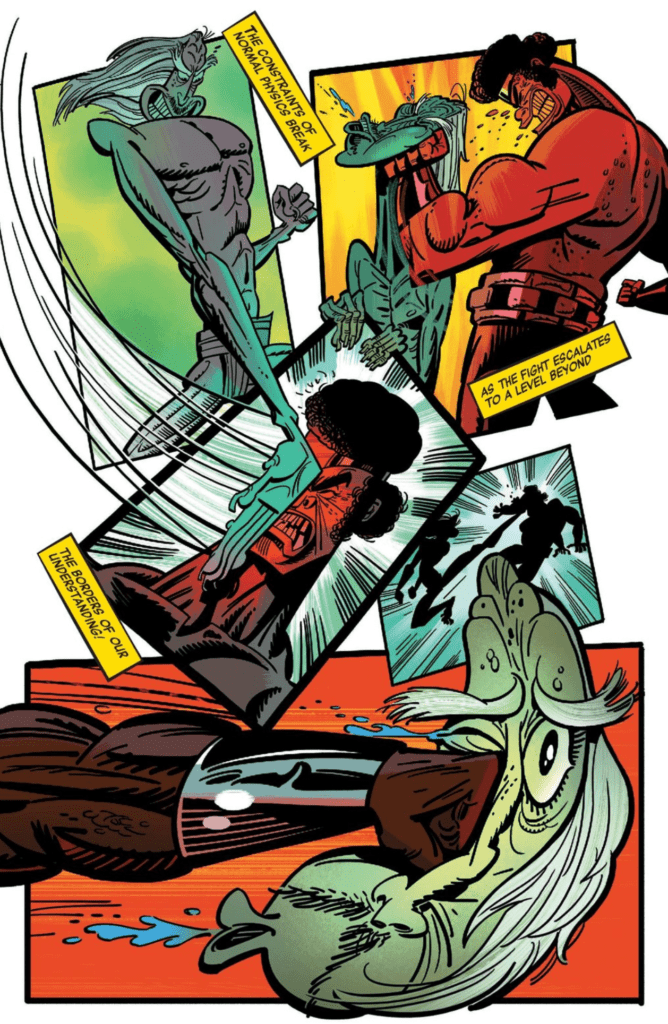
Nevertheless, not everything involves action, but even the quieter moments look beautiful due to Tartakovsky’s art.
PSYCHEDELIC COLORS/’70s LETTERING
Much like the rest of the series, the colors by Tartakovsky, Wills and Wray emulate the ’70s fantastically. The colors are bright, popping, and oozing with life. It almost seems like the colors made a trip from the ’70s themselves, especially at one moment when Luke Cage gets drugged. When drugged, Luke Cage goes on a mindbending soul trip that looks like someone wanted to make tie-dye lucid dreams. These pages look absolutely jaw-dropping with vivid colors.
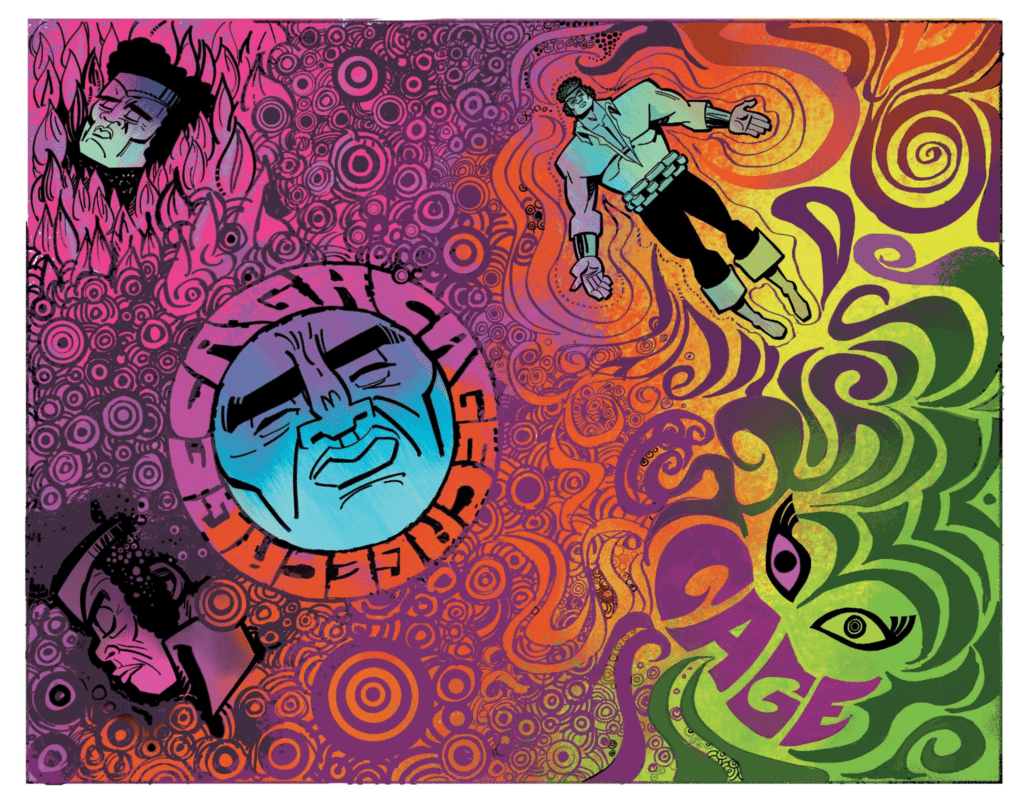
The colors don’t only work amazingly there, as they are used in other instances to the same effect. Namely, fight scenes. The team puts a single color in some fights to help the action pop, yet in other scenes, they add dazzling colors. An amazing example is when Luke Cage encounters a snake, and the colors showcase varying emotions.
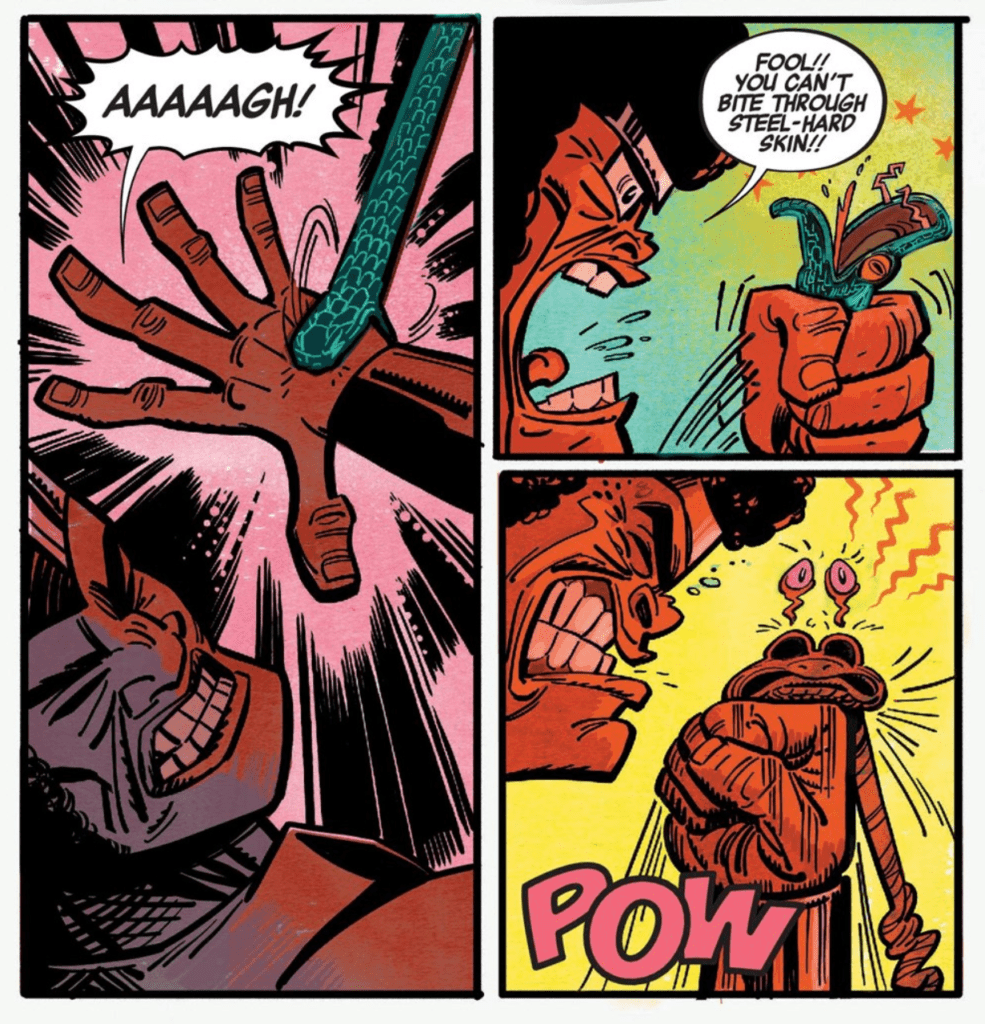
Cowles’ lettering is a perfect and magnificent fit in CAGE! His style mirrors that of fun ’70s comics with the word bubbles breathing life into the pages. One of the best aspects is when characters ay their names, and they are loud and proud. Yet one scene sticks out, where the villain reveals their origin. Luke Cage wants none of that and talks over him, Cowles shows this with Luke Cage’s dialogue blocking it.
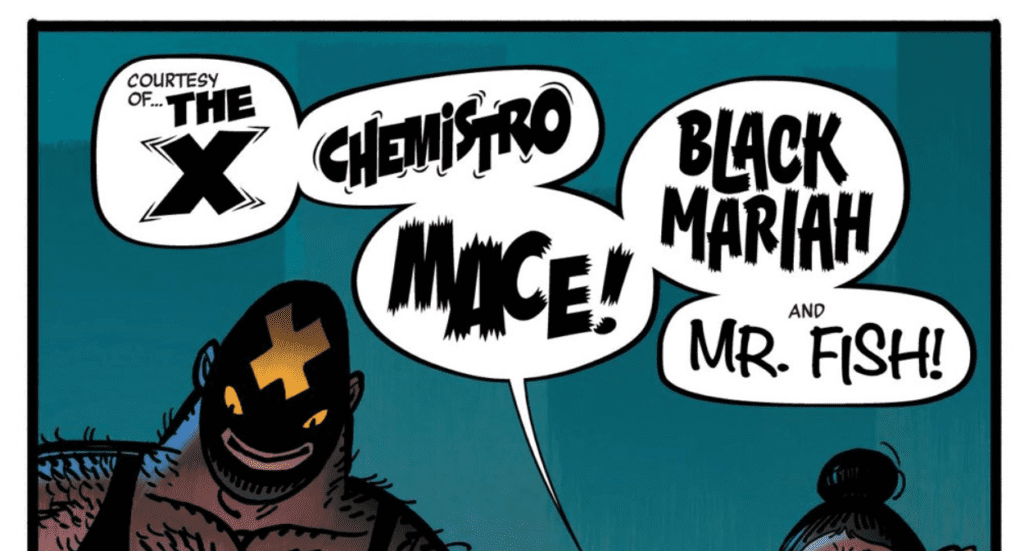
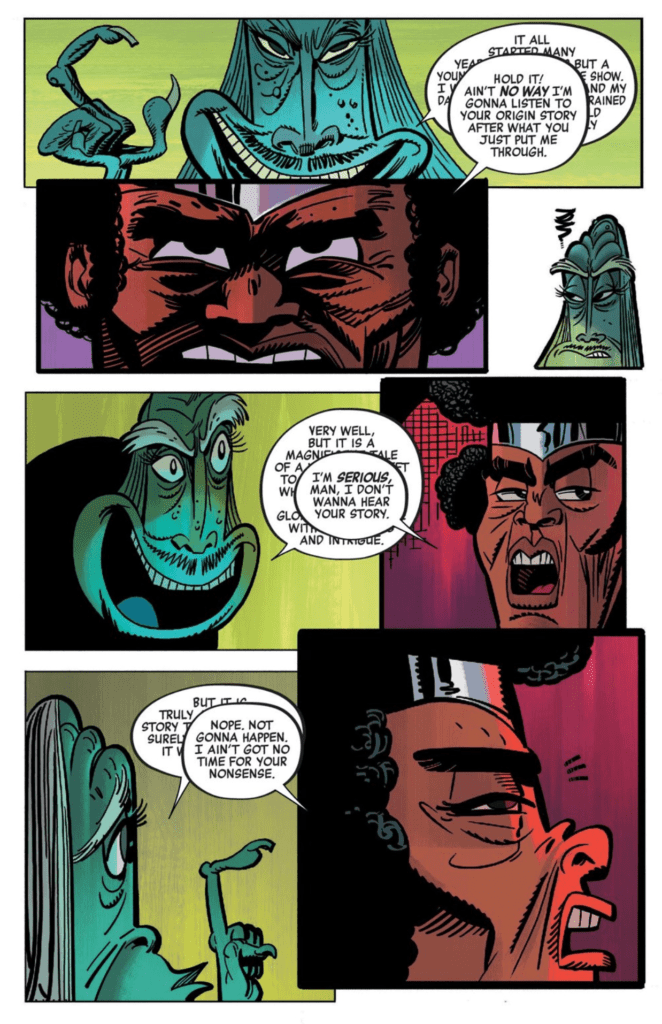
CAGE! FOUR YEARS LATER
Tartakovsky’s CAGE! has a few problems with how some characters are portrayed in a ’70s blaxploitation manner. Yet, that only occurs in minor ways and shows that era’s problems. If you’re looking for a quick, fun read give CAGE! a try. Then let us know what you thought below.

